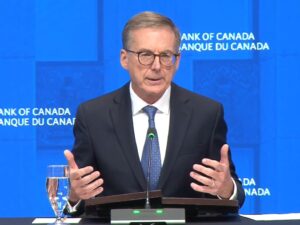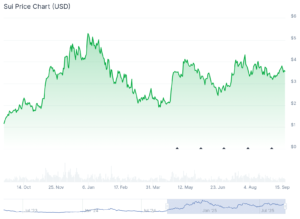Market Outlook for the week of 18th-22nd August

The week will begin quietly, with no significant data releases scheduled for Monday that are likely to impact the FX market.
On Tuesday, attention will turn to Canada with the release of inflation data, while in the U.S. the focus will be on building permits and housing starts.
Wednesday brings several key events, including the RBNZ monetary policy announcement in New Zealand, inflation data from the U.K., and later in the day, the release of the FOMC meeting minutes.
On Thursday, the spotlight shifts to the flash manufacturing and services PMIs for Australia, the eurozone, the U.K., and the U.S. In addition, the U.S. will publish existing home sales data.
Thursday also marks the opening of the Jackson Hole Symposium, though Fed Chair Powell is scheduled to deliver his remarks on Friday. ECB President Lagarde and BoE Governor Bailey are also expected to speak later on Saturday.
Rounding out the week, Canada will release the m/m retail sales data on Friday.
In Canada, the consensus for CPI m/m is 0.4%, compared to the prior 0.1%. Median CPI y/y is expected to remain unchanged at 3.1%, trimmed CPI y/y is also expected to hold steady at 3.0%, while common CPI y/y is likely to edge up to 2.7% from 2.6%. For core CPI m/m, no consensus has been set at the time of writing, with the previous reading at 0.1%.
Headline inflation is expected to remain at 1.9% y/y in July, unchanged from June, though underlying price pressures appear hotter. The removal of the carbon tax continues to weigh on headline figures, but tariffs, higher service costs, and steady consumer demand are keeping core measures elevated. Gasoline prices declined on both a monthly and annual basis, while food inflation, still affected by retaliatory tariffs, remains above 3%, according to RBC analysts.
Excluding food and energy, prices likely rose 2.7% from a year earlier, slightly above June’s pace. The Bank of Canada’s preferred core measures (CPI-trim and CPI-median) are expected to remain close to 3%, at the top of its target band, though shorter-term momentum should ease as April’s outsized gain drops out of the calculation.
The RBC analysts also emphasized that resilient household spending is a key driver of these firm underlying trends, with retail sales and card data pointing to continued strength. Given stable labor market conditions, ongoing fiscal support, and inflation holding within its target range, the BoC is likely to keep rates on hold.
In the U.S., the consensus for building permits is 1.39M vs prior 1.40M, while housing starts are expected at 1.29M vs prior 1.32M.
Homebuilders continue to face challenges from sluggish single-family demand and excess supply, which has led to a sharp decline in single-family permits in recent months. In contrast, multifamily projects have been a bright spot, with June’s 30% surge in apartment starts offsetting weaker single-family activity and lifting total starts by 4.6%.
For July, analysts at Wells Fargo expect a 1.6% decline in overall starts, as single-family weakness persists and multifamily activity normalizes after June’s surge. Builder sentiment also remains under pressure, with nearly 40% of firms reporting price cuts to attract buyers according to a NAHB survey. Even so, steadier mortgage rates and ongoing strength in apartment demand could pave the way for a modest rebound later this year.
At this week’s meeting, the RBNZ is expected to deliver a 25 bps rate cut, bringing the policy rate down to 3.0% and resuming its easing cycle.
According to RBNZ Chief Economist Conway, tariffs are weighing on the New Zealand economy, acting as a demand shock that could ease price pressures over the medium term.
Recent economic data also support the case for a rate cut. Q2 CPI rose 2.7% y/y but came in below forecasts, with underlying measures continuing to ease. Labor market data was also weak, showing higher unemployment, modest wage growth, and a slight decline in employment. These signals point to cooling domestic momentum.
Markets are now anticipating another 25 bps cut in November, which would lower the policy rate further to 2.75%.
In the U.K., the consensus for CPI y/y is 3.7% vs 3.6% prior, while the core CPI y/y is expected to remain unchanged at 3.7%. Reasons for the expected uptick are higher food costs and a temporary rise in hotel prices tied to major events such as concerts, which will offset the lower household energy bills. The pickup in services inflation is likely to be short-lived, making the headline figure a less reliable signal for policy direction.
If inflation surprises to the upside, it could influence expectations for a potential rate cut at the November meeting.
This week’s eurozone PMIs will be closely watched as the first major gauge of economic sentiment following the late-July trade agreement with the U.S., which will impose a 15% tariff on most EU exports. Consensus expects both manufacturing and services activity to soften slightly in August, with the composite PMI projected at 50.6, consistent with sluggish but still positive economic growth.
The data will play an important role in shaping expectations for the ECB. Modest Q2 GDP growth and stable employment lessen the urgency for immediate easing. While a September rate cut remains the base case, stronger-than-expected PMI results could delay the final 25 bp move until December.
In the U.S., the consensus for existing home sales is 3.92M vs prior 3.93M. High borrowing costs continue to weigh on housing activity, with existing home sales falling 2.7% in June to their weakest pace in ten months.
Supply has increased enough to slow home price growth and even trigger outright declines in some markets, but affordability remains constrained by elevated rates and a softer labor market backdrop.
Although the dip in mortgage rates in early August may offer some relief, it will not be reflected in the July data, where sales are expected to ease another 0.5% to 3.91M annualized, Wells Fargo analysts said.
In Canada, the consensus for core retail sales m/m is 0.8% vs prior -0.2%, while retail sales m/m are expected at 1.0% vs prior -1.1%.
The advance estimate for June points to a 1.6% rise in retail sales, partly driven by a 2.2% rebound in auto prices. Gas station sales are expected to remain stable, reflecting little change in fuel costs. Excluding autos and gasoline, core retail sales are estimated to have grown by nearly 2%, suggesting that underlying consumer demand remains resilient, according to RBC analysts.
The Jackson Hole Symposium is typically a highly anticipated event for traders, and this year’s will be the last with Chair Powell, allowing him to reflect on lessons from his time leading the Fed. The 2025 framework review is less about rewriting Fed doctrine and more about formalizing what is already in practice: A symmetric 2% inflation target and a balanced focus on employment. While markets should not expect immediate policy shifts, Powell’s farewell message at Jackson Hole will help set the intellectual tone for the Fed’s next chapter.





